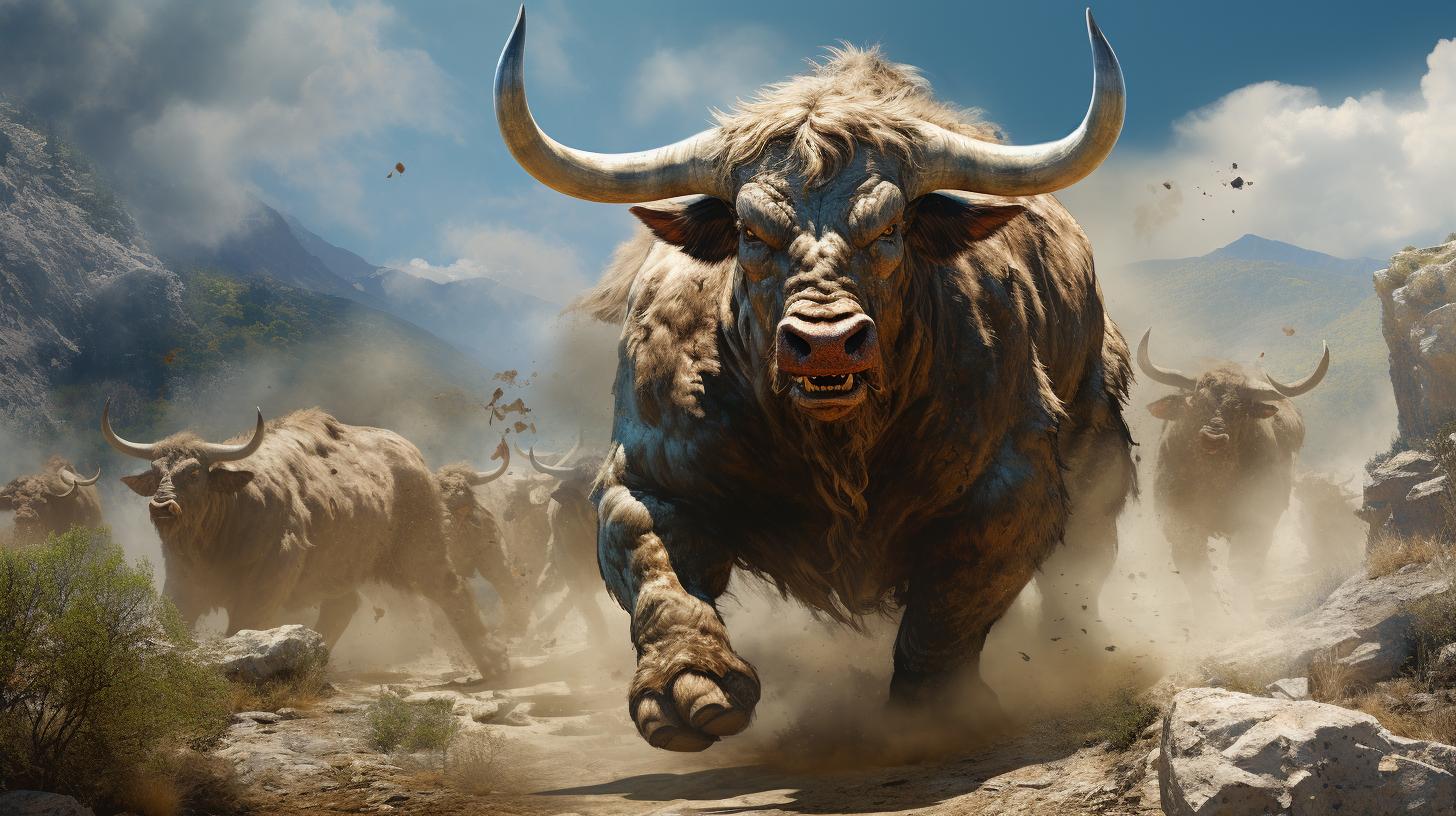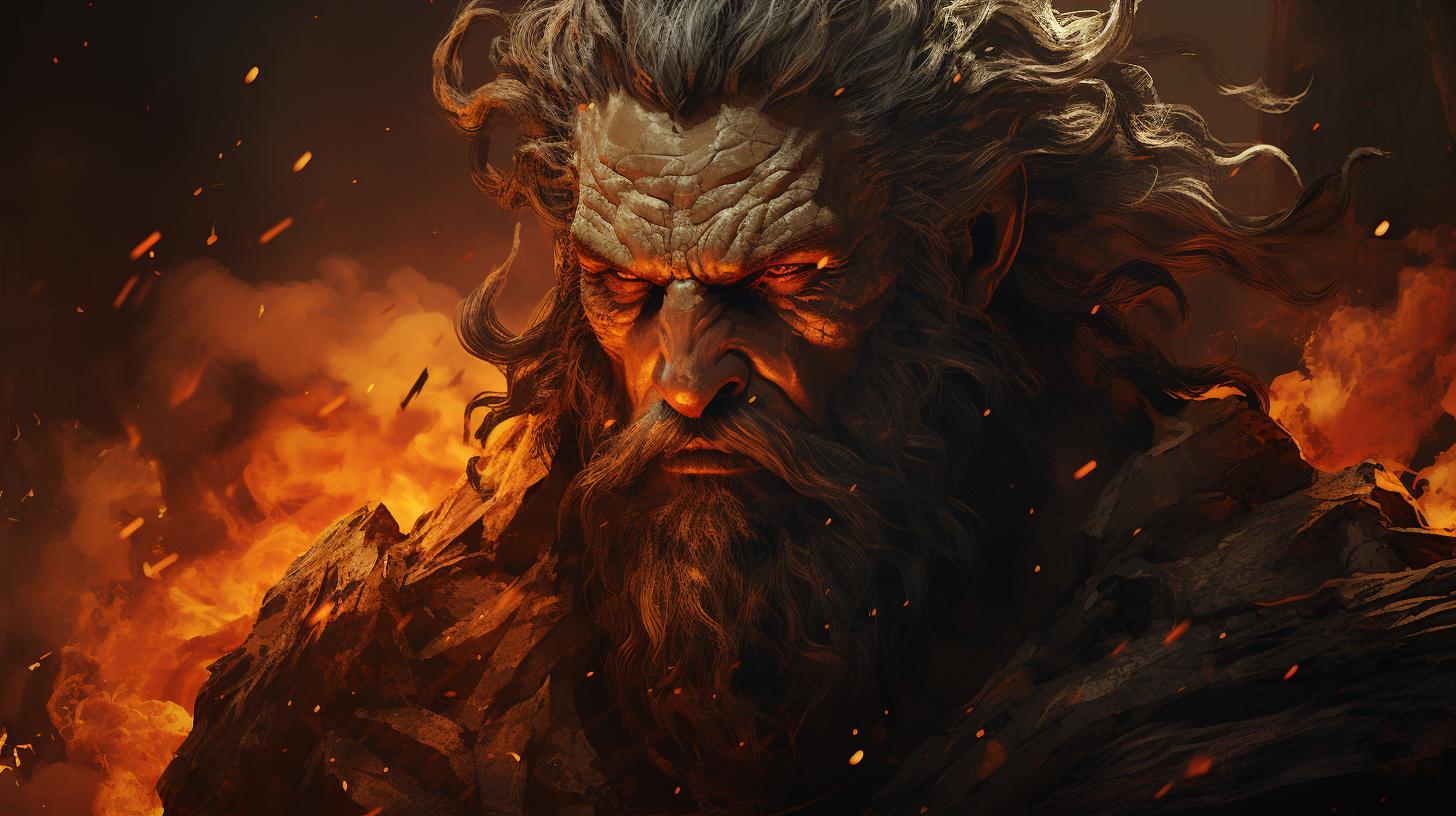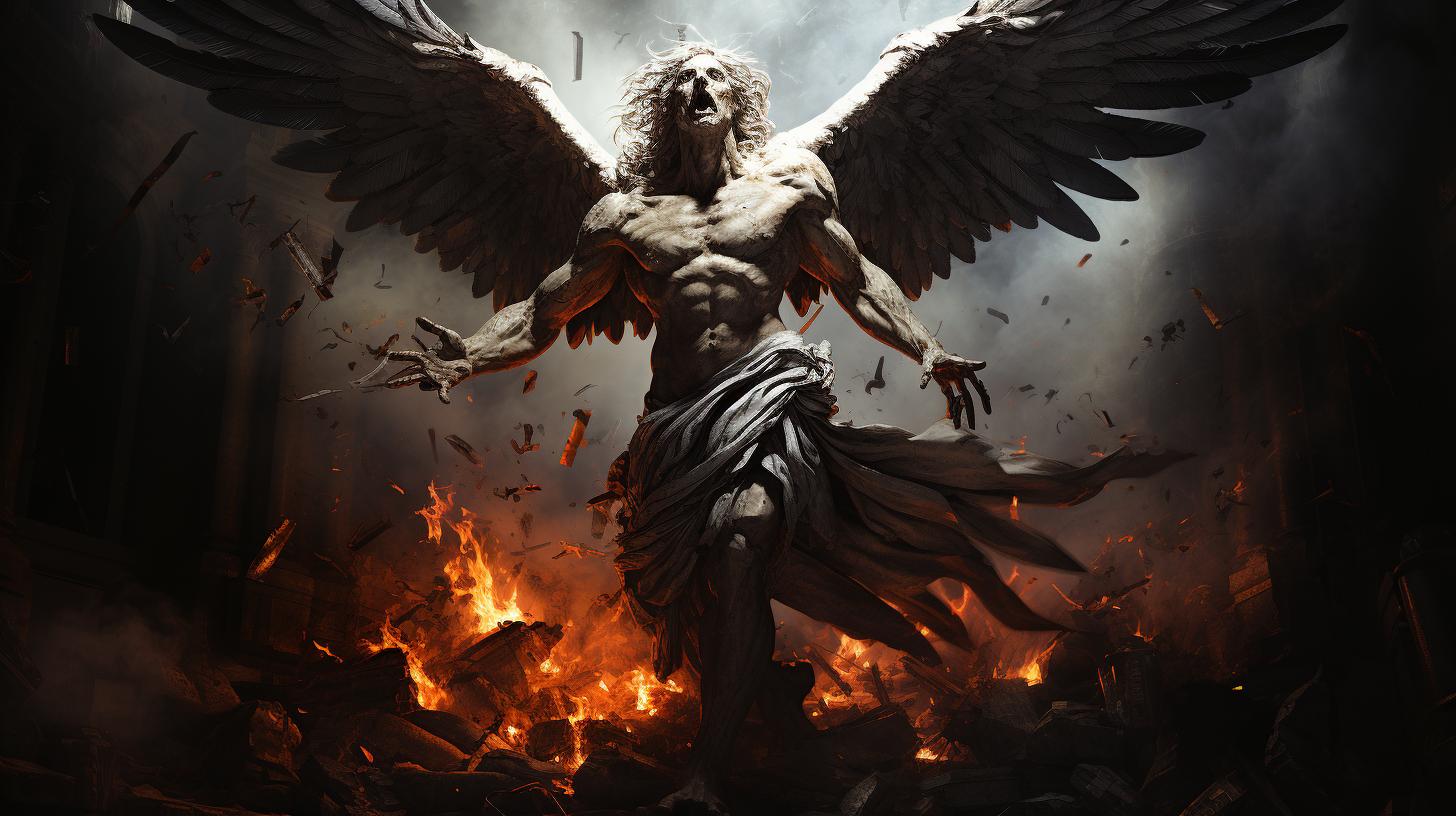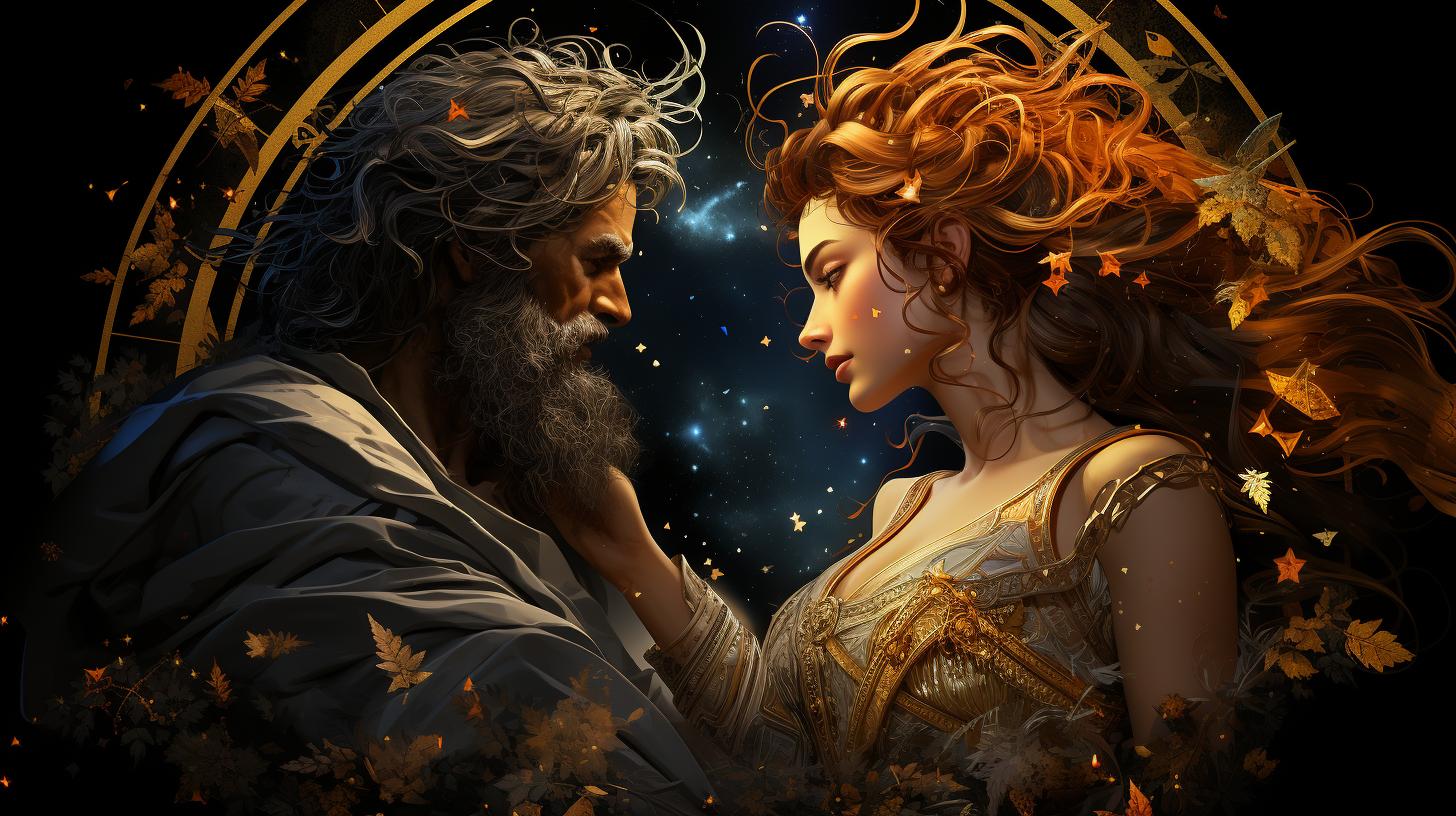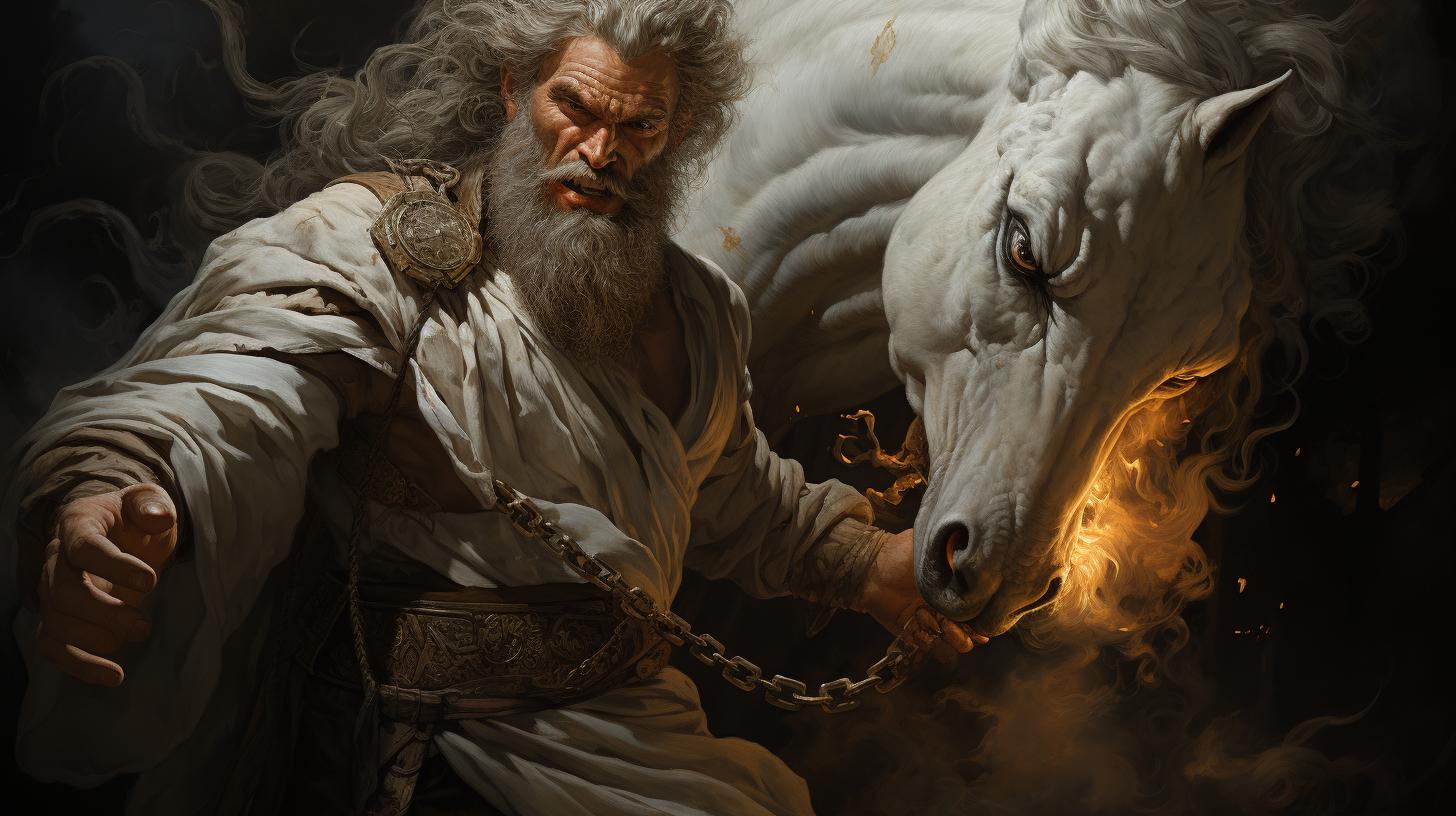Cretan Bull in Greek Mythology: The Tale of a Legendary Beast
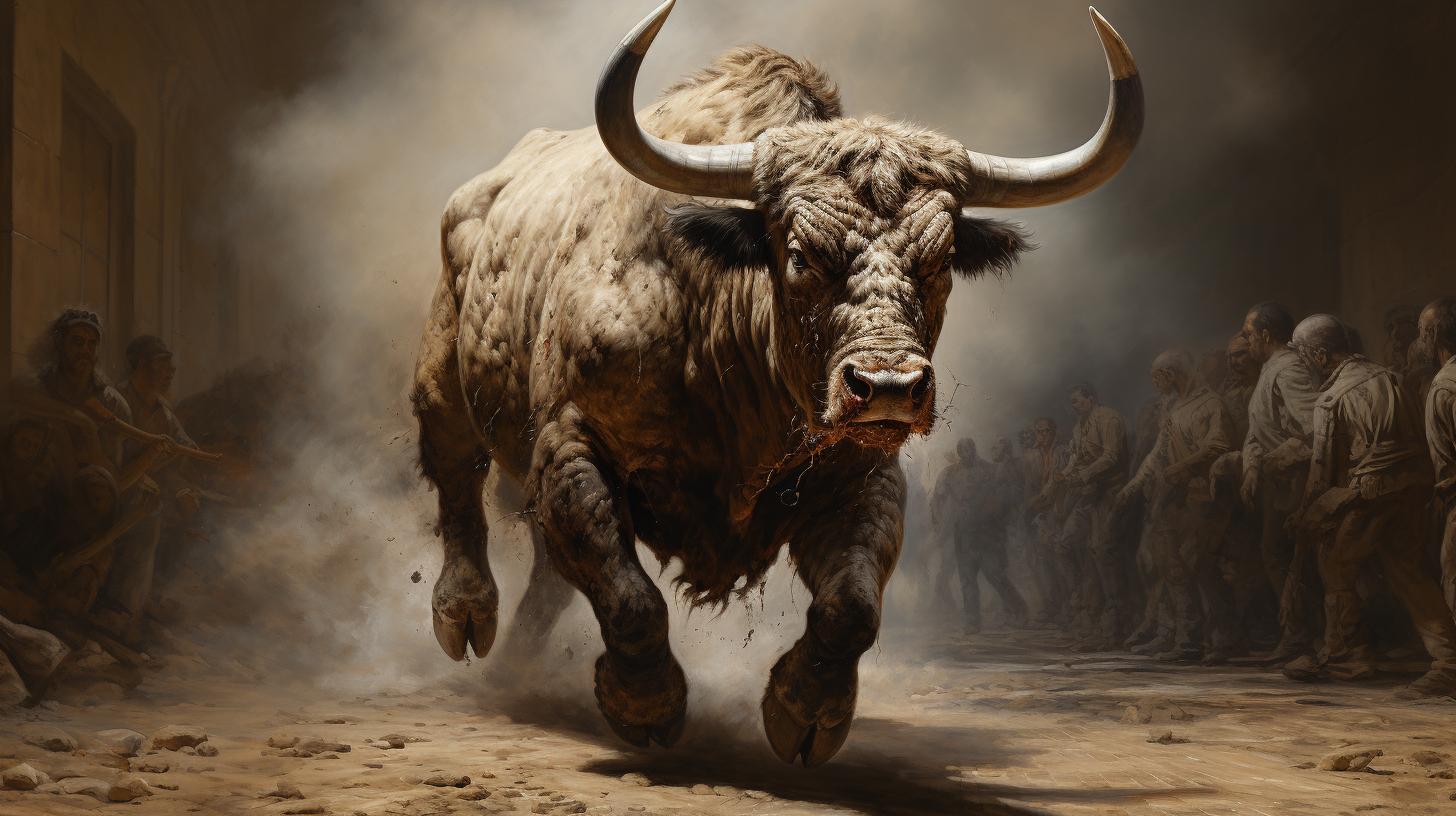
The Cretan Bull, a central figure in Greek mythology, was the cause of various legends. According to the story, King Minos of Crete received a white bull from the sea god Poseidon, but chose not to sacrifice it.
This decision angered the gods and resulted in a series of unfortunate events. Minos’ wife, Pasiphae, fell in love with the bull and gave birth to the Minotaur, a creature half-man and half-bull.
The bull itself also wreaked havoc. Desperate, Minos sought guidance from the oracle of Delphi and built a labyrinth to contain the Minotaur. Theseus, a hero from Athens, eventually fought the Minotaur and saved the prisoners.
The story of the Cretan Bull holds a significant place in Greek culture and has been referenced in various literary works and myths. Its image is associated with the constellation Taurus and is intertwined with the legends of Troy’s fall and Hercules.
The Legend of the Cretan Bull in Greek Mythology
In Greek mythology, the Cretan Bull holds a significant place as a captivating creature.
This legendary tale encompasses various elements, including the story of Minos and the gift he received from Poseidon, the curse and birth of the Minotaur, and the chaos that ensued when the bull was unleashed upon the land.
Let’s delve into each intriguing aspect of this mythological legend.
The Story of Minos and the Gift from Poseidon
The roots of the Cretan Bull legend begin with Minos, the king of Crete, who sought to establish his right to the throne. He implored Poseidon, the god of the sea, for a white bull as a symbol of his authority.
Poseidon granted Minos’ request, but the king was so captivated by the bull’s beauty that he decided not to sacrifice it as intended. This act of defiance against the will of a god incurred the wrath of Poseidon and ignited a series of unfortunate events that would unfold in the kingdom of Crete.
The Curse of the Cretan Bull and the Birth of the Minotaur
The curse that befell Minos manifested itself in Pasiphae, his wife. Consumed by her desire for the white bull, she became enamored and eventually gave birth to a monstrous offspring known as the Minotaur, a creature with the body of a man and the head of a bull.
This aberration further deepened the chaos that surrounded the presence of the Cretan Bull within the kingdom.
The Chaos Caused by the Cretan Bull
Not only did the Minotaur bring forth destruction, but the Cretan Bull itself wreaked havoc upon the land of Crete. The uncontrollable and untamed nature of the bull sparked fear and unrest, creating a turbulent environment for the inhabitants.
Desperate to find a solution, Minos sought guidance from the Oracle of Delphi for a remedy to this chaos.
Continue reading the rest of the article to discover the fascinating events that unfolded in the creation of the labyrinth, Theseus’ quest to slay the Minotaur, and the enduring cultural significance of the Cretan Bull in Greek mythology.
The Creation of the Labyrinth and the Imprisonment of the Minotaur
The story of the Cretan Bull continues with King Minos seeking guidance on how to handle the Minotaur, the half-man, half-bull creature born from the curse of the beautiful bull gifted by Poseidon. Minos turns to the Oracle of Delphi, a revered priestess of Apollo known for her prophecies.
In a desperate plea for a solution, Minos asks the Oracle for guidance on dealing with the Minotaur and the chaos it brings.
Minos’ Consultation with the Oracle of Delphi
The Oracle of Delphi, in her wisdom, suggests that Minos should construct a labyrinth to imprison the Minotaur. The intricate maze would serve as an inescapable prison for the fearsome creature, containing its destructive power and protecting the innocent.
Minos takes this advice to heart, seeing it as the only solution to end the sufferings caused by the Minotaur. With instructions from the Oracle, he sets forth to bring the labyrinth into existence.
The Involvement of Daedalus in Building the Labyrinth
To breathe life into the Oracle’s vision, Minos calls upon the renowned craftsman and architect Daedalus. Known for his brilliance, Daedalus takes on the task of constructing the labyrinth with great determination.
His craftsmanship and creative prowess come together in the intricate design, making the labyrinth an enigmatic and treacherous place to navigate. Daedalus understands the importance of its complexity, as no ordinary being should be able to find their way out once trapped within its walls.
The Minotaur’s Imprisonment and Feeding of Athenian Prisoners
With the labyrinth completed, Minos ensures the Minotaur’s imprisonment within its depths. The creature, fuelled by its insatiable hunger, is provided a grotesque sustenance—Athenian prisoners offered as tribute. These innocent lives are condemned to the labyrinth, serving as a constant reminder of the price paid for defying the gods and the consequences of Minos’ actions.
Bound by his duty as king, Minos believes this to be the only way to control the beast and maintain peace within his kingdom.
In summary, the creation of the labyrinth, guided by the Oracle of Delphi’s wisdom, marks the turning point in the tale of the Cretan Bull. Daedalus’ craftsmanship turns the concept into reality, ensnaring the Minotaur within its intricate walls.
The vile creature’s imprisonment is intertwined with the sacrifice of innocent Athenian prisoners, perpetuating the consequences of Minos’ defiance. This chapter of the Cretan Bull’s story showcases the intricate planning and grim reality of their existence.
Theseus’ Quest to Slay the Minotaur and End the Sacrifices
Teseo’s Encounter with Hecale and the Promise to Zeus
In his quest to slay the Minotaur and end the sacrifices, Theseus found himself taking refuge from a storm in Hecale’s cottage. An elderly woman, Hecale made a solemn promise to Zeus that if Theseus succeeded in capturing the Cretan Bull, she would make a sacrifice in his honor.
Unfortunately, upon Theseus’ triumphant return with the bull, he discovered that Hecale had passed away. True to his word, Theseus erected a monument to honor her and proceeded on his heroic mission.
Teseo’s Successful Capture of the Cretan Bull
Fulfilling his promise to Hecale and driven by his determination, Theseus managed to capture the mighty Cretan Bull. With his bravery and strength, he overcame the beast, symbolizing his readiness to face the challenges that awaited him in the labyrinth.
Theseus’ Heroic Battle with the Minotaur and the Rescue of the Athenian Prisoners
Armed with the knowledge given by Ariadne, daughter of King Minos, Theseus ventured into the labyrinth to confront the fearsome Minotaur and end the horrific sacrifices.
With courage and cunning, Theseus fought a fierce battle with the monstrous creature, ultimately emerging victorious. His triumph not only secured his place as a revered hero but also freed the Athenian prisoners trapped in the labyrinth.
The Enduring Legacy of the Cretan Bull in Greek Culture
The Cretan Bull holds a significant place in Greek culture and has left a lasting impact on various aspects of society. From its association with the constellation of Taurus to its depictions in literature and mythology, the tale of the Cretan Bull continues to captivate and inspire.
The Constellation of Taurus and its Association with the Cretan Bull
One remarkable aspect of the Cretan Bull’s legacy is its connection to the constellation of Taurus. Ancient Greeks linked the image of the bull to this constellation, immortalizing the mythical creature among the stars.
The constellation’s prominence in the night sky serves as a constant reminder of the bravery, turmoil, and triumph associated with the Cretan Bull.
Depictions of the Cretan Bull in Literature and Mythology
Throughout history, the story of the Cretan Bull has been a source of inspiration for countless literary works and mythological narratives.
Poets, writers, and playwrights have woven tales that explore the bull’s power, chaos, and heroic encounters. From ancient epics to modern adaptations, the Cretan Bull’s presence in literature continues to fuel imagination and storytelling.
References to the Cretan Bull in Troy’s Fall and Hercules’ Legends
The legend of the Cretan Bull has not only influenced individual stories but has also found its place within broader narratives. The fall of Troy, a defining event in ancient Greek mythology, is often intertwined with the heroism and symbolism of the Cretan Bull.
Additionally, the mighty Hercules, renowned for his Twelve Labors, faced various trials that included encounters with mythical creatures like the Cretan Bull. These references further affirm the enduring legacy and cultural significance of the Cretan Bull in Greek lore.
.

